Experts opinion
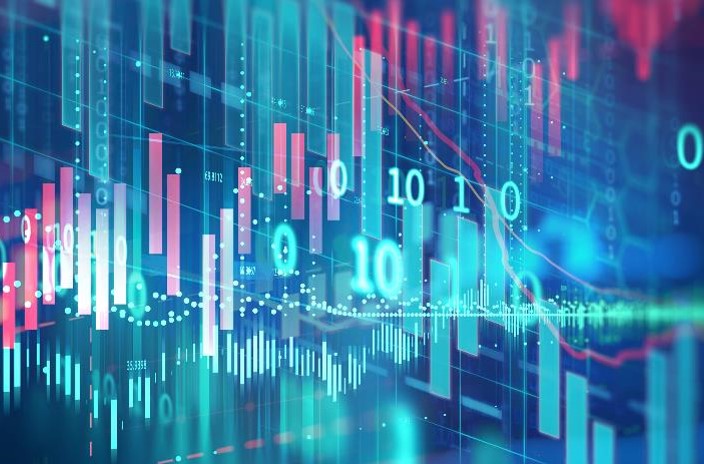
Philipp Senn, Head of Communications/Member of the Executive Board, Nagra in an interview with atw - International Journal for Nuclear Power
Interview with Philipp Senn
Steffen Kanitz, RWE Nuclear in an interview with atw - International Journal for Nuclear Power
Interview with Steffen Kanitz
Rita Baranwal, Westinghouse in an interview with atw - International Journal for Nuclear Power
Interview with Rita Baranwal
Prof Dr Sibylle Günter, Max Planck Institute for Plasma Physics (IPP) in an interview with atw - International Journal for Nuclear Power
Interview with Prof Dr Sibylle Günter
Kalev Kallemets, Fermi Energia, in an interview with atw - International Journal for Nuclear Power
Interview with Kalev Kallemets
Peter Berben, ENGIE, in an interview with atw - International Journal for Nuclear Power
Interview with Peter Berben
Dr Guido Knott, PreussenElektra, in an interview with atw - International Journal for Nuclear Power
Interview with Dr Guido Knott
Pietro Barabaschi, ITER, in an interview with atw _ International Journal for Nuclear Power
Interview with Pietro Barabaschi
Greg Hands, BEIS, UK in an interview with atw - International Journal for Nuclear Power
Interview with Greg Hands
Kirsty Gogan, Terrapraxis and Rauli Partanen, Think Atom in an interview with atw - International Journal for Nuclear Power
Interview with Kirsty Gogan and Rauli Partanen
Interview Kirsty Gogan, Rauli Partanen, Terrapraxis, Think Atom atw 2022-04
Ingemar Engkvist, WANO, in an interview with atw - International Journal for Nuclear Power
Interview with Ingemar Engkvist
Dr Christian Reiter, FRM II, in an interview with atw - International Journal for Nuclear Power
Interview with Dr Christian Reiter
Massimo Garribba, EU Commission, in an interview with atw - International Journal of Nuclear Power
Interview with Massimo Garribba
Yves Desbazeille, FORATOM, in an interview with atw - International Journal for Nuclear Power
Interview with Yves Desbazeille
Rita Baranwal, EPRI, in an interview with atw - International Journal for Nuclear Power
Interview with Rita Baranwal
John Gorman, CNA, in an interview with atw - International Journal for Nuclear Power
Interview with John Gorman
Mikhail Chudakov, IAEA, in an interview with atw - International Journal for Nuclear Power
Interview with Mikhail Chudakov
William D. Magwood, IV, NEA, in an interview with atw - International Journal for Nuclear Power
Interview with William D. Magwood, IV, NEA
Dr Nico Vollmer in an interview with kernenergie.de about innovations in fuel elements
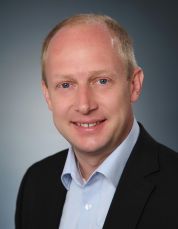
Dr Nico Vollmer
January 2019
Nico Vollmer studied physics at the Technical University of Munich and completed his doctorate on high-density nuclear fuels at the Munich II research reactor. Since 2006, he has worked in various positions at Framatome, such as neutronics, materials science or in defuelling for magnox reactors. Since 2017, he has been responsible for global marketing in the Fuel business unit at Framatome.
The fuel elements for pressurised and boiling water reactors, hundreds of which are in use worldwide, have been fuelled for decades with uranium dioxide fuel (UO2) in fuel rods made of zirconium alloys. Now we are increasingly hearing about completely different concepts: all-metal fuel elements without pellets and cladding tubes or so-called Accident Tolerant Fuel. Can you give us a brief overview of current developments?
In 1954, the world's first nuclear power plant was connected to the grid in Obninsk, Russia, using metallic fuel made of uranium-molybdenum. The high metal density and thermal conductivity brought many advantages. However, there were also disadvantages, such as the relatively low melting temperature or the swelling behaviour. Today, ceramic fuels dominate: 98 % of the electricity generated by nuclear power plants is produced from UO2-tablets. Of course, ceramic fuels have also been and continue to be further developed - for example, as early as 1997 with chrome doping of the UO2-tablets. This improved plasticity and reduced the release of fission gas.
From 2011, Fukushima posed the challenge of developing fuels and fuel elements that offer higher safety margins in the event of critical incidents. A project called "PROtect" was launched at Framatome for this purpose. In a first step, cladding tubes with a chrome coating were developed and tested in a reactor from 2016. In a second step, the existing cladding tube material is to be replaced with a silicon carbide sandwich structure (SiCf-SiC) can be exchanged. All international fuel element manufacturers are also working on Enhanced Accident Tolerant Fuel (EATF).
Framatome is pursuing a completely new concept, such as metallic fuel elements for pressurised water reactors, in the joint venture "Enfission" together with the US company Lightbridge Corporation. Prototypes are currently being tested outside the reactor, with the first tests in a power reactor planned for 2021.
What are the advantages of these new concepts and can innovative fuel elements only be used in newly constructed plants?
PROtect offers higher margins in terms of embrittlement and hydrogen absorption and is intended to prevent accidents like Fukushima in the long term. In a first step, the chrome coating will significantly increase the so-called "coping time", i.e. the reaction time. In a further step, the zirconium alloy of the cladding tubes will be replaced with SiCf-SiC because there can be no zirconium-hydrogen reaction here. This prevents the release of hydrogen. A new reactor design is not required.
Where are we today with the realisation of these concepts? Are these just ideas, or will we soon see industrial production, perhaps in Germany too?
PROtect is not just an idea. We completed our industrial production programme in 2018. Cladding tubes with chromium coating and chromium-doped UO2-tablets can be produced at our subsidiary, Advanced Nuclear Fuels, in Lingen. In 2019, complete fuel rods will then be used in fuel elements in a commercial reactor in Europe and the USA as part of the PROtect programme. Entire precursor fuel elements will follow in 2021. From 2025, we could offer reloads with our PROtect fuel rods. We at Framatome are very proud of this, as PROtect is the world's leading EATF programme.
Vitaly Trutnev in an interview with kernenergie.de about the world's first floating NPP
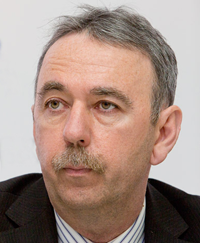
Vitaly Trutnev
January 2019
Vitaly Trutnev has been Head of the Directorate for the Construction and Operation of Floating Nuclear Power Plants at Rosenergoatom since July 2017. He graduated from the Ivanovo Institute of Power Engineering in 1984. He began his professional career at the Kalinin NPP, where he rose from electrical fitter to deputy chief maintenance engineer. In 2012, Vitaly Trutnev became Chief Engineer of the Directorate of the Baltic NPP under construction, two years later he was appointed Director of the Directorate and held this position until 2017.
What is the background to the floating nuclear power plant project and what will the Akademik Lomonossow be used for?
The safe, environmentally friendly and economically viable supply of electricity and heat to climatically difficult and hard-to-reach areas is the primary goal of Akademik Lomonossow. The use of the floating NPP saves up to 200,000 tonnes of coal and 120,000 tonnes of heating oil per day and prevents the corresponding emission of climate-damaging gases. The unhindered and cost-effective access to energy enables the local population in Pewek - the location of the Akademik Lomonossow - to enjoy positive social and economic development and contributes significantly to improving their quality of life.
The block-modular composition of the floating NPP or SMR, if you like, with integrated fission zone, steam generator, pressuriser and other equipment enables the plant to be manufactured in a factory. The dismantling of the plant is also carried out in a specialised factory, which means that the "greenfield" status is already achieved on site when the plant is removed.
Akademik Lomonosov
What can you tell us about the technology of the reactors and the ship, what is the development of the reactor ship based on?
The floating plant is equipped with two KLT-40S icebreaker-type reactors, each with a capacity of 35 MW - together they are capable of generating up to 70 MW of electricity and 50 Gcal/h of heat in nominal operation - enough to supply a city with a population of 100,000. The associated infrastructure, including a building complex, hydraulic structures and a coastal platform, ensure that the energy block can be safely harboured and the electricity transmitted to the coast.
The development of the floating NPP is based on the proven reference technology of ship reactors with a long and successful operating history of the Tajmyr and Vaygach nuclear icebreakers and the LASH barge Sevmorput. The passive and active safety systems on the floating power block provide multi-layered, absolute protection of the environment against the most severe hypothetical accidents. The ship's hull is designed to withstand a collision with an iceberg or another ship. The hull and the load-bearing structures of the superstructure are made of steel, which is resistant to brittle fracture even at low temperatures. The rooms of the reactor block are insulated with a double-walled body and the reactor systems are equipped with special biological barriers.
Where in Russia or in the world do you see further potential applications for reactor ships? Could the Akademik Lomonosov establish a global market for floating nuclear power plants?
Currently, a number of countries in the Middle East and South East Asia have shown interest in innovative Russian development.
Work is already underway on the second generation of floating NPPs - an optimised floating power unit that will be smaller than its predecessor. It is to be equipped with two RITM-200M reactors, each with a capacity of 50 MW. This version of the floating unit in particular will be offered for export.
Frank Hennig in an interview with kernenergie.de about the energy transition
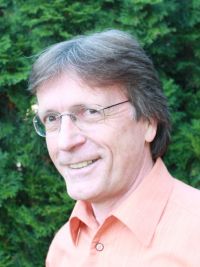
Frank-Hennig
April 2018
Frank Hennig, a graduate engineer for power plants and energy conversion, worked for many years in the coal-fired power plants of a large utility company, most recently as a works council member. Today he works as a lecturer in technical training and for a trade union. He is the author of the book "Dark doldrums - or why energy cannot be turned around" and writes the series "ABC of the energy transition and green language" online on "Tichys Einblick" and in the magazine of the same name.
The German government's answer to a minor enquiry about the costs of the energy transition from December 2017 states that these cannot be calculated. What is your assessment of the costs?
The Federal Government's response is an admission of a lack of overview and control over the globally unique and nationally organised energy transition. There is no master plan and therefore no cost calculation and control. Professor Fratzscher from the DIW described the energy transition as an "experiment", which in my opinion is a very apt description. Using the trial-and-error method, the German government is feeling its way forward in terms of state planning and hoping for success. However, experiments are characterised by the fact that their outcome is open.
Given that the electricity transition has basically only just begun, it will indeed be extremely difficult to comprehensively record all cost components. In addition to the comparatively easy to determine items such as the EEG levy and redispatch costs as well as the costs for grid stability systems, reserve power plants and security standbys, there are other indirect costs that are difficult to record.
First of all, there is the abundance of unmanageable direct subsidies and funding at all levels from the EU to the municipalities, from funding programmes from Brussels to Agenda 21 payments in cities and municipalities for the use of renewable or low-emission energy systems. The list of KfW-subsidised measures for the use of green energy is extensive. There are almost always financial injections for eco-industrial plants.
The indirect costs of the energy transition are manifold and cannot be analysed in their entirety. For example, the question of what grid expansion would have been necessary anyway and to what extent the expansion of decentralised volatile generation makes the expansion of the medium and low-voltage level in particular necessary cannot be answered seriously. The same applies to the assessment of the losses incurred by municipal utilities due to the fall in the electricity exchange price and investments by municipalities and community energy companies in wind farms, which in many cases are loss-making. The lack of investment in the conventional energy sector and in energy-intensive industries (see the migration of carbon fibre production) cannot be measured in monetary terms either.
Those affected by the low wholesale price of electricity are the large utilities with thermal power plants that have not yet been amortised and, in particular, gas-fired power plants, which can no longer survive on the market due to the high fuel price. This is counterproductive from an emissions perspective, but is a logical consequence of the market intervention of the EEG. The reduced tax revenues of companies in the conventional energy industry are also an indirect cost of the energy transition. German industrial and commercial electricity prices for customers not exempt from the levy are the second highest in Europe and cost growth and employment.
Added to this is the loss in value of properties in rural areas, which can only be sold at a loss or not at all because some communities are surrounded by wind turbines.
Drastic mismanagement of the EEG, for example the solar bubble that burst in 2012 after over-subsidisation, also costs money. Last but not least, the costs of the nuclear phase-out for taxpayers have risen to an as yet unquantifiable level due to gross technical errors made by the German government as part of the 2011 nuclear moratorium. Furthermore, costs for the taxpayer could arise from the fact that the shutdown dates for nuclear power plants do not correspond to the residual electricity quantities agreed in the 2002 nuclear compromise.
Furthermore, there is no indication that the German government is endeavouring to limit the costs of final storage.
It is foreseeable that costs, both direct and indirect, will continue to rise as the energy transition progresses. Even the German government will not be able to predict how quickly and to what extent. The fact is: wind and sun do not send a bill, but they are not free - according to German energy transition methodology, they are not even cost-effective.
German grid operators are reporting sharply rising costs for emergency interventions in the electricity grid in 2017. What are the primary causes of these costs and how do you think they can be reduced?
The rising costs for grid interventions are caused by the lack of coordination between the expansion of volatile generators and grid expansion. Here, too, there is no master plan that brings together the 16 energy strategies of the federal states with the federal strategy and the grid expansion plans.
The owners of renewable plants would have to assume entrepreneurial responsibility and the corresponding risk in a timely manner. Until now, the rule has been "build and forget", i.e. once the plants have been built, the money is collected. Others have to take care of the transmission, marketing, sale and billing of the electricity, including the necessary grid services. And feed-in tariffs continue to be paid even when plants have to be decommissioned for grid-related reasons. This is a blatant flaw in the EEG that urgently needs to be rectified.
A sensible solution would be to abolish the EEG and pass a follow-up law that promotes research and incentivises base-load and control-load-capable feed-in.
The increasing share of renewable energies in electricity generation in Germany seems to indicate that the energy turnaround could be successful in its current form, despite the expected failure to meet the target for reducing greenhouse gases by 2020. Would you share this interpretation?
No. I think it is a fallacy to simply extrapolate the trend up to 100 per cent on the basis of installed capacity. People forget that there is a system change in between. Up to now, volatile electricity has been embedded in an existing grid stabilised by conventional generation and provided with grid services. In future, these services will also have to come from renewables, although neither technical nor regulatory developments in this direction can be observed.
The majority of renewable feed-in is volatile and generates around 35 per cent of electrical energy on an annual average, fluctuating between around ten and almost one hundred per cent. This makes a permanent backup system necessary. The further uncoordinated expansion of volatile feed-ins would lead to considerable oversupply at times, but would not make the backup system superfluous. When there is no wind, the number of stationary wind turbines is irrelevant.
Financing the fixed costs of both systems is an economic burden that cannot be avoided in this way and will continue to rise. If conventional power plants can be replaced by huge storage capacities in the future, these will also incur considerable costs.
In any case, there is an urgent need to bring renewable generators closer to being able to control and provide grid services - after all, they should one day be able to fully supply the grid. When this will happen should be assessed soberly on the basis of further developments and not set dates based on wishful thinking.
Interview with Michael Shellenberger Founder and President, Environmental Progress, USA
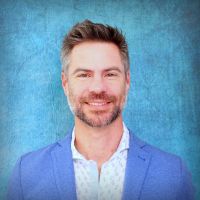
Michael Shellenberger
atw 11/2017 | DAtF-Notes
November 2017
"Everyone now knows Germany won't make its 2020 climate target because of its nuclear phase-out"
You have a long personal record of activism in environmental and particularly climate policy. Given that nuclear power is not the beauty queen of clean energy options and thus often left out of consideration, what caused you to start advocating for nuclear power to keep up and possibly expand capacities?
Like most people in Germany, I was raised to be anti-nuclear. As a child I thought nuclear plants and nuclear bombs were basically the same thing. When I was in my twenties I helped stop a radioactive waste dump from being built in California. I only started to question my prior beliefs while doing energy policy analysis to address climate change. We couldn't see any way that intermittent forms of energy like solar and wind could power the world without keeping billions of people in poverty and destroying the natural environment. Around the same time, one of my childhood idols, Stewart Brand, one of America's most famous and respected environmentalists, came out and said we needed nuclear energy to solve climate change. Perhaps the biggest turning point was Fukushima. I went back and read the United Nations reports on Chernobyl, and then interviewed scientists, and learned that radiation wasn't what I had been led to believe. I then joined Stewart and climate scientist James Hansen in advocating for nuclear.
Despite the decision to phase out nuclear power in Germany there is still a lot of knowledge on operation of NPPs and advanced nuclear safety technologies available in Germany. Do you think there is a place for the German nuclear industry in the global quest for clean power?
The German nuclear industry is still one of the best in the world, thanks to the brilliance of German engineering, and your strong craft culture. I haven't given up on Germany and I don't think anyone else should either. But for Germany to compete internationally for nuclear business it's going to have to stop shutting down its nuclear plants. Without a domestic future for nuclear, international business options decrease rapidly and permanently. South Korea is staring down this very same problem right now: if Korean technology and experts are not to be trusted at home, who should be expected to pay for them abroad?
The German federal government and more strongly some state governments are increasingly pressuring neighbouring countries to shut down existing NPPs and also have been opposing new build projects. What do you think of such a policy of exporting nuclear phase-out?
I think it's grossly irresponsible and unethical. Already Germany is gaining a reputation as a climate outlaw for its nuclear phase-out. German emissions have risen two years in a row and will probably rise again this year. German efforts to phase out nuclear are resulting in more deadly air pollution and potentially catastrophic climate change. If France, Sweden, Belgium, and Switzerland follow Germany's bad example they can expect not just rising energy costs but also sharp and immediate spikes in carbon emissions.
Everyone now knows Germany won't make its 2020 climate target because of its nuclear phase-out. Germany's reputation is about to worsen significantly when it hosts United Nations climate talks in November in Bonn. I'll be there with climate scientist James Hansen to give a talk, as will other pro-nuclear environmentalists.
Prof Dr Clemens Walther in an interview with kernenergie.de about residual materials in decommissioning
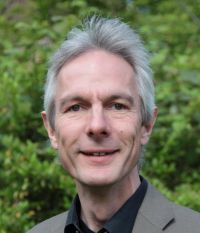
Prof Dr Clemens Walther
September 2017
Low- or intermediate-level waste can pose a risk to human health if handled improperly. This is why the legislator also stipulates exactly how such materials are to be disposed of. At present, final disposal is planned in the Konrad repository, which is currently under construction.
Residual materials that originate from a nuclear power plant but are not contaminated with radioactive substances, i.e. have not been contaminated or activated, can be treated in the same way as residual materials from non-nuclear facilities. They are harmless from a radiation protection point of view.
Between these categories there are residual materials that were contaminated or activated but could be freed from radioactive substances (decontaminated) so effectively that the radiation they still emit is very low. They can be disposed of in normal landfill sites. Proof that there is no increased risk to the public is provided as part of the clearance procedure
This Release procedure is used in Germany to differentiate between the various residual materials during dismantling in order to decide on further handling. How does clearance work and how should it be assessed in terms of radiation protection and health?
Clearance in accordance with Section 29 of the Radiation Protection Ordinance is a procedure by which radioactive substances are released from monitoring in accordance with the Atomic Energy Act. This means that these substances can then be passed on and processed or disposed of as non-radioactive substances. For a so-called "unrestricted release", the transferor must demonstrate the risk to the population that could arise from the use or disposal of these substances. The measure of the risk from radiation is the so-called "effective dose". The increase in this effective dose from the released substances may not exceed half a per cent of the effective dose from natural radiation for a member of the public.
In May 2017, the German Medical Association passed a resolution rejecting the release of materials from nuclear power plants in general and recommending that all material that is not transferred to a final repository should be stored permanently on site. What do you think of this demand?
In order to categorise the consequences of such an approach, several aspects must be weighed against each other. In fact, the risks of small doses of radiation to human health have not been fully researched. However, this additional dose must not be considered in isolation, but must always be considered in conjunction with doses due to natural radiation. The effect on living organisms is always the same whether the radiation comes from artificial or natural radionuclides. If the above-mentioned strict regulations on clearance are observed, the annual effective dose of an individual with a hypothetical place of residence in Cologne increases from approx. 2.10 mSv (milliSievert) to a maximum of 2.11 mSv. The same increase occurs if this person either flies to the Canary Islands on holiday, spends a week skiing in the mountains (high-altitude radiation), or receives a (single conventional) X-ray of an arm or leg.
The additional dose from released substances, albeit small and with a low probability, could in fact be almost completely avoided by confinement in a "bunker" as proposed by the German Medical Association. However, this benefit would be rather theoretical and containment would not be a permanent solution. Such a structure would have to be maintained for a very long time. If this is not done, the barrier can become damaged and fail after just a few decades. Furthermore, the preservation of such a building prevents the dismantling of all power reactors to "greenfield sites", as called for in the context of the energy transition, with the possibility of unrestricted subsequent utilisation of the sites. Instead, a building remains that will ultimately have to be dismantled. This means that considerable burdens from the use of nuclear energy are being shifted to future generations. This contradicts the ethical principle that, wherever possible, the polluter and beneficiary of a technology should pay for the consequences.
Dr Burkhard Kleibömer in an interview with kernenergie.de about the supply of uranium
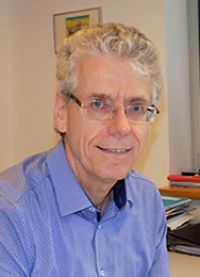
Dr Burkhard Kleibömer
July 2017
Dr Burkhard Kleibömer is a physicist and has worked for URENCO Deutschland GmbH and its predecessor company Uranit GmbH since 1988 after completing his doctorate in the field of molecular physics. He initially worked on the evaluation of laser processes for uranium enrichment. Since 1993, his area of responsibility has been the authorisation and supervisory procedure for the Gronau uranium enrichment plant. He has been responsible for monitoring since 2004 and was responsible, among other things, for obtaining the licence to expand the UAG to 4,500 tUTA/a and carrying out the stress test. Dr Kleibömer has given presentations on his field of work at various conferences.
The most important source of nuclear fuel is the production of natural uranium. What is the supply situation today and in the long term??
Uranium is about 40th on the frequency scale of elements, about as common as silver. Uranium should therefore be viewed like any other raw material: "good" deposits are exploited first, then the poorer deposits have to be utilised at greater expense and effort. The OECD assumes that uranium can be economically extracted from the ground for the next 200 years. Uranium is mined in a large number of countries on all continents. This guarantees security of supply for the future.
Most nuclear power plants in the world use enriched uranium as their main fuel. What about security of supply on the technical side, i.e. enrichment and upstream conversion? Is there enough capacity and where are the plants located??
Today, uranium enrichment is carried out using the gas ultracentrifuge process, which was developed by the German physicists Dr Gernot Zippe and Dr Max Steenbeck, among others, and later significantly in the URENCO Group. Using very fast rotating centrifuges, the isotope uranium-235 is concentrated from the gaseous compound UF6 of uranium with fluorine. This is possible because the differences in mass compared to the isotope uranium-238 mean that there is proportionally more uranium-235 in the centre of the rotor, where it is skimmed off. As the degree of enrichment of a single centrifuge is relatively low, various stages are passed through until the concentration of uranium-235 has finally increased from the natural 0.7% to approx. 3-5%. This physical separation process is technically very demanding and the procedure is subject to secrecy. There are currently four global enrichment companies: ROSATOM (Russia), the URENCO Group, the French company AREVA and - for its own requirements - the Chinese company CNNC. ROSATOM operates four plants, AREVA one, CNNC two and the URENCO Group four, one each in the Netherlands, Germany, the United Kingdom and the United States. These 10 or so enrichment plants cover the majority of the market.
Due to the events in Fukushima, most of the nuclear power plants in Japan are still shut down. As a result, there is an oversupply of enrichment capacity so that the supply of enrichment services is guaranteed well into the future. The diffusion method used in the past is no longer used as it requires around fifty times as much energy as the centrifuge method.
The laser process has been investigated in several countries, but has never reached industrial maturity. The so-called CANDU reactors, which are operated with natural uranium, do not require any enrichment at all. There are currently around 30 CANDU reactors in operation. The concept was developed in Canada, but has also been used in South Korea, China, Romania and Argentina in recent decades. Two German-made heavy water pressurised boiler reactors that can be operated with natural uranium are also in operation in Argentina.
Conversion refers to the chemical conversion of uranium extracted from the deposits into UF6, which is used as a process medium in uranium enrichment. Several industrial plants are currently in operation in the USA, France, Russia, Canada and China, which supply the uranium enrichment plants with UF6.
In addition to natural uranium, there are also secondary sources of nuclear fuel from the reprocessing of spent fuel elements, from the conversion of nuclear weapons and military stockpiles and from the re-enrichment of so-called tails, i.e. depleted uranium from enrichment plants. What role do these sources play today and what potential do they have?
The re-enrichment of depleted uranium, which still contains a significant proportion of U235, is a major source of natural uranium. Therefore, depleted uranium is a valuable material as it substitutes natural uranium and represents a significant potential for secondary uranium sources.
In the past, highly enriched uranium, e.g. from Russia, has been used in the USA in individual cases by mixing it with depleted uranium to produce low-enriched uranium for use in nuclear power plants (megatons to megawatts). However, no predictions can be made about further such processes.
The use of uranium from the reprocessing of spent fuel elements as so-called MOX fuel elements takes place on a small scale. However, the production of such fuel elements requires special radiation protection precautions due to the radiation of the reprocessed uranium.
Dr Christian Raetzke in an interview with kernenergie.de on 60 years of the European Atomic Energy Community (EURATOM)

Dr Christian Raetzke
March 2017
Dr Christian Raetzke is a lawyer. For the past 20 years, he has mainly focussed on nuclear and radiation protection law, both in Germany and internationally. He obtained his doctorate in 2000 with a thesis on the Atomic Energy Act. From 1999 to 2011, he worked for E.ON Kernkraft (now PreussenElektra) in Hanover. He has been running his own law firm in Leipzig since 2011 and advises nuclear technology companies, institutions and authorities in Germany and abroad.
Dr Raetzke is a lecturer and member of the advisory board of the International School of Nuclear Law in Montpellier and has published several books and numerous articles. He is chairman of the German chapter of the International Nuclear Law Association.
The Treaty of Rome in 1957 established the European Economic Community and EURATOM, which still exists today. What exactly is EURATOM and what tasks does it fulfil?
EURATOM is the catchy abbreviation for the European Atomic Energy Community. In 1957, two Treaties of Rome were concluded, each of which established a Community: the European Economic Community (EEC) and EURATOM, both of which were modelled on the 1951 Treaty establishing the European Coal and Steel Community (ECSC). Since then, the EEC has evolved into today's EU through the Maastricht and Lisbon Treaties, among others. The ECSC Treaty was limited to 50 years and expired in 2002. The EURATOM Treaty is open-ended and the European Atomic Energy Community still essentially exists in its original form. It has its own legal personality alongside the EU, but its bodies are united with those of the EU (Council, Commission, Parliament, Court of Justice).
The EURATOM Treaty assigned a number of tasks to the Community. At the time, the focus was on the development of a European nuclear energy industry. Accordingly, the treaty gives EURATOM competences and tasks in areas such as promoting research and development, setting up companies, managing investments and ensuring the supply of nuclear material through the EURATOM Supply Agency.
At the same time - and this is the second important aspect - EURATOM was given competences relating to safety, radiation protection and protection against the unauthorised use of fissile material. Like the EU, EURATOM can, within the framework of the powers conferred on it, issue legal standards that are binding on the Member States and must be implemented by their authorities. EURATOM even has direct inspection and intervention rights in the area of nuclear material monitoring.
Very importantly, EURATOM does not require its members to utilise nuclear energy. In this sense, the promotion competences are more of an "offer" to the member states. However, the control and safety regulations apply to everyone. They cannot be "deselected".
What advantages does EURATOM offer Germany and what will we still gain if the use of nuclear power in electricity generation is ended as planned?
It should perhaps be made clear at the outset that EURATOM not only offers "benefits" in the sense of a service, but - as I have just said - also imposes requirements, e.g. in terms of safety and radiation protection. But this is also ultimately an advantage for the population. In this respect, it is right to speak of advantages. And indeed, even after the last German nuclear power plants have been shut down, we will still have something from EURATOM.
First of all, there will still be facilities in Germany handling nuclear fuel after 2022. The spent fuel elements will remain under EURATOM nuclear material monitoring, even after they have been finally transferred from the current interim storage facility to the final repository - which will take several decades. Site selection, construction and operation of repositories are also increasingly covered by EURATOM safety regulations. The reorganisation of responsibilities for federal repositories in Germany in recent years was partly prompted by a EURATOM directive.
It is then important that the EURATOM regulations apply not only to nuclear energy and the disposal of its waste, but to radiation protection in general. This applies, for example, to occupational health and safety when radiation is involved - as is the case in many industries that have nothing to do with nuclear energy, such as test radiators. In the field of medicine, in radiation diagnostics and therapy, EURATOM regulations are important for medical staff and patients. EURATOM even regulates the handling of natural radiation, such as that caused by the noble gas radon in houses.
And finally: even the regulations on nuclear energy remain important for Germany - in the sense that EURATOM regulations guarantee a uniformly high level of safety in Europe, which also applies to plants in neighbouring countries. Despite all the verbal criticism of EURATOM, this aspect of the EURATOM regime is ultimately also valued as an instrument by countries such as Austria and Luxembourg, which have not utilised nuclear energy and have long been opposed to it.
Conclusion: A lot has changed since 1957. The use of nuclear energy is controversial within the EU and EURATOM. However, EURATOM does not force anyone to use nuclear energy. Those states that continue to favour and use nuclear energy benefit from elements of the EURATOM regime, such as the safeguarding of uniform supply. However, all member states are subject to the regulations on safety, nuclear material monitoring and radiation protection, also in the sense of a mutual obligation. In this respect, it can be said that even after 60 years and under changed conditions, the EURATOM Treaty still fulfils the important role assigned to it.
Mika Pohjonen Interviewed by kernenergie.de on the Finnish Site Selection for High Active Waste Disposal
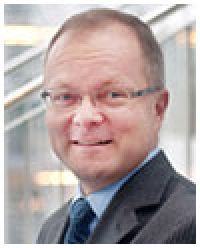
Mika Pohjonen
Mika Pohjonen is Managing Director of Posiva Solutions Oy, an engineering service provider for spent fuel management and disposal founded in June 2016 as daughter of Posiva. Mr Pohjonen has over 25 years of international experience in the energy sector and has held various positions in the engineering and management consulting business, e.g. at Fortum Oyj and Pöyry. Mr Pohjonen has broad expertise in the nuclear energy business acquired in Finland and many other European countries that utilize nuclear energy, as well as in the Middle East. He has worked as an invited expert for the International Atomic Energy Agency (IAEA) on several occasions.
Finland and of course POSIVA were very successful in the process of site selection for a HAW-repository and you have obtained the construction licence for such a repository in November 2015, the first in the world. Can you shortly describe the process and point to the main reasons for success in your opinion?
Preparations for the final disposal of spent nuclear fuel in Finland began at the same time as the commissioning of the first nuclear power plants in the late 1970s. The schedule for the final disposal was set in 1983, when the Government decided on the objectives and programme for nuclear waste management.
| 1978 | Geological screening for final disposal starts |
| 1983 | Government decision on overall schedule |
| 1984 – 1999 | Site characterisation and selection process |
| 2001 | Decision in principle by the Government and the Parliament: Olkiluoto selected and approved as the final disposal site |
| 2004 | Construction of ONKALO research tunnel and site confirmation studies starts in Olkiluoto |
| 2012 | Construction licence application |
| 2015 | Construction licence granted |
| by 2025 | operation licence expected to be granted and start of industrial final disposal |
The success of implementation was based on some key factors. Very important was transparency and comprehensive interaction with stakeholders with the Environmental Impact Assessment (EIA) as a structure and guide for public involvement and participation since 1994; however, the interaction was not limited to the EIA process, but has continued actively on different levels, for different stakeholder needs until today and is continuing. Another major point is stakeholders' trust in STUK as a regulatory body and STUK's strong independent approach. Noticing that Posiva openly respects and obeys STUK's guidance has also promoted trust in Posiva. Nuclear facilities on the same site have served well, being top units in the world and creating trust in the region. People have become accustomed to nuclear facilities and benefited from them. Also final disposal offers long term employment opportunities. The employees of the power plants have acted as advocates for nuclear, being committed to the industry and trusting it. To read more about Posiva you can visit www.posiva.fi/en.
One striking difference between Germany and Finland when looking at the respective history of repository site selection is the lack of trust of parts of the German public in the operator and regulator as well as in science. What would be your advice on confidence building for the operator and the regulator of the site selection process, but also with regard to the scientific community dealing with the topic?
In my opinion, unfortunately there is no shortcut. The issue is complicated not only from social, technical, environmental and communicational points of view, but also ethically. Interaction with stakeholders has to be implemented differently for each stakeholder, it has to evolve over time and it has to be continuous, not related to confined processes like EIA etc. The scientific community specifically, but regulator and operator as well face the big challenge of communicating understandably. They need to take into account that stakeholders have the right to communicate and discuss the issue in a meaningful way from their own starting point and on their own level, not on a level chosen by nuclear professionals. One cannot expect them to educate themselves into experts, either.
Local acceptance plays a key role when selecting the site for spent fuel disposal. A long time is needed for acceptance and it is helpful if the municipality in question already has nuclear facilities. Locally in nuclear municipalities people are much better informed about nuclear issues than at national level - communication has been ongoing since the power plants were commissioned.
In Germany there are three different types of potential host rock for a HAW-repository available. In your opinion, is this an asset for the site selection process that will make it easier to be successful or might this feed controversy in the process and between possibly suitable regions?
Globally, solutions for the disposal of spent nuclear fuel are developed in different geologies. Assuming these solutions are proven to be safe, why not to include different geologies - and methodologies - to find the most suitable solution for Germany. Posiva can of course offer its expertise to be used in this process, if needed.
Dr Thomas Ernst in an interview with kernenergie.de on the Swiss selection procedure for final storage sites for radioactive waste

Dr Thomas Ernst
October 2016
Switzerland is in the midst of a site selection process for a deep geological repository - in Germany we would call it a final repository - for highly radioactive waste. The legal basis for the so-called sectoral plan procedure[1] were created in 2008. How far along are you in the process so far?
The sectoral plan for deep geological repositories is a three-stage procedure that was put into force by the Swiss government in 2008. It defines clear framework conditions for the selection of sites for the construction of deep geological repositories. The Swiss Federal Office of Energy (SFOE) manages the process, specifies the division of roles and coordinates cooperation between the various players. Safety is the top priority.
The sectoral plan procedure is currently in the second half of stage 2. In the first stage, six suitable geological siting areas were identified based on the entire territory of Switzerland. In the second stage, sites for the arrangement of the surface infrastructure were developed in a participatory process. At the beginning of 2015, Nagra published the results of its safety-related comparison of the siting regions and proposed two of them for further work. This proposal is currently being reviewed by the authorities and will then go out to consultation before the government makes a decision. In addition, 3D seismic measurements have already been carried out in the proposed areas.[2] and Nagra has recently submitted numerous applications for deep boreholes. The results of the 3D seismics and the deep boreholes will provide important data for the upcoming licensing procedure (= authorisation procedure). Around 2022, Nagra will announce where it will prepare general licence applications for a high-level waste repository and a low- and intermediate-level waste repository. The Federal Council and Parliament will decide on the general licences at the end of the 20s. The electorate can then call for a referendum.
Early public participation is very important in the sectoral plan process, also as a lesson learnt from the experience of the rejected Wellenberg deep geological repository project for low- and intermediate-level waste. What has been the experience with public participation so far, have citizens accepted this opportunity?
Regional conferences have been established in all potential siting regions. These are made up of delegates from politics, business, industry and interest organisations as well as citizens and represent the interests, needs and values of the respective siting region in the sectoral plan process. It can be said that this procedure is successful thanks to the involvement of all stakeholders, even if it is not free of criticism.
Regional participation refers to an instrument of involvement - in the sense of inclusion and co-determination. However, the power of decision ultimately lies with the federal government. Some critics are of the opinion that participation is too limited, as there is no local right of veto. However, this should not be the case for an infrastructure project of national importance. The primacy of safety can no longer be guaranteed with a local veto. However, the majority of those involved in the sectoral plan process greatly value participation and are committed to finding the best possible solution for waste disposal in the interests of the country as a whole.
The sectoral plan procedure does not provide for underground mining investigations for site selection, as is the case with the Gorleben site in Germany, but for surface geoscientific methods such as seismic and other geophysical surveys or drilling. In your opinion, could this approach also be an option for Germany?
Switzerland already has two underground mining research laboratories in which investigations can also be carried out on a 1:1 scale. The surface geoscientific investigation methods that we use in Switzerland provide the necessary site-specific information. The top priority in the Swiss approach has always been safety. And safety can be guaranteed with our approach.
We see an advantage of the above-ground investigation methods in the fact that the underlying rock is not affected. The aim of our approach is explicitly to cause as little damage as possible to the host rock, especially the underground storage area.
Once the general licence has been granted, underground geological investigations are also carried out on site in Switzerland. In the so-called test areas, the safety-relevant properties of the host rock must be confirmed on a site-specific basis to substantiate the proof of safety before an operating licence is granted.
This combination of research laboratories, site-specific geoscientific investigations and the verification of safety-relevant properties at the selected site is a pragmatic approach that the Swiss legislator has opted for.
Wolfgang Däuwel in an interview with kernenergie.de on nuclear safety in Germany and worldwide
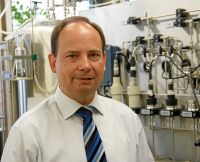
Wolfgang Däuwel
June 2016
As a consequence of the Fukushima accident, nuclear safety standards have been raised in many countries and international standards have been tightened. The Nuclear Safety Convention is also to be amended. What is this all about and what are the specific consequences for the technical safety requirements for existing and new nuclear power plants?
The industry worldwide has learnt lessons from Fukushima. Among other things, the concept of robustness has been discussed more intensively since then. Put simply, this is about additional safety margins when events go beyond the design of a plant. The focus here is on additional technical components in the plants, on mobile devices for cooling, for example, but also on the further development of instructions and emergency plans for such situations. All these fields of action are a useful addition to, but by no means a substitute for, the classic nuclear safety philosophy of ruling out such events from the outset as part of a correct design and safe operation.
Worldwide, the corresponding investigations and analyses have led to existing nuclear power plants being retrofitted. The ongoing new construction projects were also analysed again after Fukushima. However, there was practically no need for adjustments here, as Generation III nuclear power plants in particular, such as AREVA's EPR, already had a very high level of safety.
Where does Germany stand in this respect, what is the safety standard of German plants and what does the nuclear industry in Germany have to offer? Is our expertise relevant for international nuclear safety?
In Germany, the Reactor Safety Commission conducted an extensive investigation, which clearly established that the German plants have a high level of safety reserves - including those that were shut down in 2011. In addition, the European Union analysed all European nuclear power plants as part of its so-called stress test. In this assessment, the German nuclear power plants also achieved consistently good, well above-average results.
In my opinion, this also has to do with the fact that there has always been a particularly critical approach to the topic of nuclear power in Germany. After 2011, we at AREVA were able to export many safety upgrades that had already been developed and installed in Germany before Fukushima, thus contributing to making nuclear power plants safer worldwide. As an example, I would like to mention our filter systems for containment, which we have since retrofitted in more than 50 reactors worldwide, after it was already standard in Germany long before 2011. The same applies to recombiners. These are components that prevent hydrogen explosions in the containment. We have realised around 100 projects in this area.
Internationally, 60 years is the target value for the service life of state-of-the-art light water reactors. In Germany, the last plants will be shut down in 2022 after 33 years of operation. Can the nuclear expertise in Germany still be maintained in the long term for national and international tasks in the areas of safety and waste disposal?
The global trend is towards extending the service life. That is correct. In the USA, even 80 years is now being discussed. If nuclear power plants are taken off the grid earlier, as is the case in Sweden, for example, it is purely for economic reasons. The German phase-out due to safety concerns in politics, despite positive assessments by the Reactor Safety Commission and the EU, is unique in the world.
This situation naturally poses a particular challenge for the German industry and in terms of maintaining expertise overall. I am convinced that maintaining expertise in the long term beyond the phase-out requires two pillars: a strong training and research landscape and innovative and successful companies. These companies must function economically in order to be able to utilise and further develop the skills in practice. In future, German manufacturers and suppliers will only be able to do this by exporting.
In my opinion, another aspect should also be given greater consideration in the discussion: Even after the phase-out, we need a recognised nuclear industry and the corresponding expertise in Germany if we want to continue to participate credibly in discussions in international bodies, for example on safety standards for nuclear power plants.
Prof. Dr.-Ing. habil. Uwe Hampel in an interview with kernenergie.de on the prospects for nuclear research and teaching in Germany
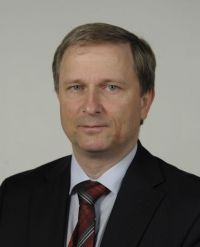
Prof. Dr.-Ing. habil U. Hampel
Prof. Dr.-Ing. habil. Uwe Hampel holds the AREVA Endowed Professorship for Imaging Measurement Techniques at the Technical University of Dresden and is Head of the Department of Experimental Thermofluid Dynamics at the Helmholtz Centre Dresden-Rossendorf. Among other things, he is also deputy spokesman for the Nuclear Technology Competence Network and a member of the Governing Board of the Sustainable Nuclear Energy Technology Platform (SNETP).
Germany will phase out nuclear energy by 2022, which is currently a key driver for research and teaching in nuclear technology, especially in reactor safety research. In your opinion and that of your colleagues, where will developments at German universities and research institutions in your field be heading?
Nuclear technology training and nuclear safety research at German universities and research institutions is excellent and continues to enjoy an extraordinarily high level of international recognition. This is not just a phrase. Surveys conducted by the Nuclear Technology Competence Network show that over 1700 students in Germany today take advantage of nuclear technology courses at universities. The nuclear safety research institutionalised in the Helmholtz Association was awarded top marks by an international panel of experts in the most recent evaluation. The high level of participation of German research institutions in international EU, OECD and IAEA projects is further proof of this. Of course, all those who are involved in this field are faced with the question of what will happen to nuclear training and nuclear safety research once the last nuclear power plant in Germany has been decommissioned in 2022. In my view, this will depend crucially on the level of social and political support for the topic of nuclear safety research in Germany in the future in the centre of a Europe with around 190 nuclear reactors in operation.
What is certain is that the Federal Republic of Germany needs comprehensive and long-term expertise in the field of waste disposal and repository research. There is also a need for the development of efficient technologies in the area of nuclear power plant decommissioning, for example for decontamination. The issue of reactor safety after 2022 is particularly exciting. In addition to the operation of a small number of nuclear research facilities, the safety assessment of facilities in neighbouring countries is an important topic. Five of Germany's direct neighbours produce electricity from nuclear energy, while a sixth country, Poland, has decided to enter the nuclear power generation market. The Czech Republic will expand its nuclear generation capacities. Almost all existing plants will have their lifetimes extended. New nuclear reactor types with improved safety features are being built in France and Finland. Some of our neighbouring countries may operate demonstrators for Generation IV reactors in the future. Germany therefore still needs basic expertise to assess these developments and to participate in international committees. I believe that politicians are very aware of this, which is why there are also corresponding statements on the future need for nuclear expertise in the German government's 6th Energy Research Programme, for example.
Many of the above-mentioned tasks for the safety assessment of our own and foreign facilities are currently carried out in Germany by the Gesellschaft für Anlagen- und Reaktorsicherheit GRS. The further development of the state of the art in science and technology in nuclear safety research is largely ensured by research in the Helmholtz Association and at universities. Basic and applied research at the highest level takes place here. State-of-the-art computer programs for researching the behaviour of nuclear materials and for accident simulations are developed and validated here, materials research is conducted in state-of-the-art laboratories and experiments, for example on thermohydraulics and material behaviour, are carried out at test facilities that are unique in the world. The basic training of our researchers is in turn provided by the nuclear technology curricula of our universities, which are part of an in-depth training programme for energy technology, process technology or automation technology engineers or physicists. If this chain is weakened at any point, this will inevitably have an impact on the quality and international reputation of German expertise. I am therefore confident that a country like Germany will continue to rely on the internationally recognised skills of its experts to assess nuclear safety in all areas. This requires the responsible ministries to continue to actively promote their own research and the training of young scientists, be it through funding programmes to maintain expertise and promote young scientists, support for participation in international projects, the maintenance of expertise in teaching, but also through public appreciation of the work carried out. In my view, one very important point is the long-term safeguarding of basic nuclear technology training at German universities, which must be part of the energy technology curriculum for the foreseeable future.
What is the situation regarding funding? In your view, are future tasks secured here, or is there a particular need for action, either in general or in individual fields of research?
When it comes to research funding, a distinction must first be made between institutional funding of the Helmholtz Centres and project-oriented funding. The former is based on multi-year research programmes that compete for programme budgets in an evaluation process. These funds are used to finance staff positions and infrastructure. To illustrate: in terms of personnel, the Helmholtz Association has around 160 staff positions in the field of waste management research and 80 staff positions in the field of reactor safety research, whereby these are positions for scientists and science support staff. These figures are still appropriate in terms of research requirements and maintaining expertise, although there is no "room for manoeuvre" if sufficient coverage of the main research topics is to be guaranteed.
Third-party funding is often the only way to obtain expert knowledge and test rigs, especially at universities. In the area of project-related funding, the research institutions receive additional funds from the three ministries BMU, BMBF and BMWi in particular, but also from other sources such as EU programmes or industry. The BMWi's reactor safety research, from which universities in particular benefit alongside GRS, and the BMBF's initiative to maintain expertise in nuclear technology for the topics of nuclear safety research, waste management research and radiation research should be emphasised. These funds are currently making a very important contribution to maintaining expertise in teaching and research, which is seen as particularly positive by my specialist colleagues, also with regard to the appreciation of the precautionary research carried out in this way. On the other hand, direct project funding from industry by power plant operators and plant manufacturers, which was still intensive until recently, has already fallen dramatically for obvious reasons. This decline can hardly be compensated by other third-party funding.
For example, application procedures for EU projects are complex and highly competitive. What's more, the success of EU project applications is determined not only by the reputation of the applicant, but also by their ability to make in-kind contributions, such as test facilities and personnel, to the project. For this reason, sustainable development is not possible in the long term without national co-funding. In other research funding programmes, such as those of the German federal states, the German Research Foundation or EU funding for young researchers (Marie Curie Actions), nuclear safety research topics are not eligible for funding for various reasons.
In summary, it can be said that the federal government's funding bodies must make a sufficient contribution through appropriate funding programmes to ensure the future maintenance of expertise in teaching and research.
Can a higher proportion of foreign students and even stronger international networking in research cooperation and the diversification of clients contribute to the diversity of the nuclear research landscape in Germany?
I can certainly see this possibility, but the potential should not be overestimated. Nuclear safety research has always had a strong international focus, as can be seen from the large number of international committees, organisations and international joint projects and degree programmes. Even today, a large proportion of our nuclear technology students come from abroad, as Germany still enjoys a very good reputation in this field. In particular, I see the need to link future publicly funded research, for example within the framework of the BMWi and BMBF programmes, even more closely to international networking and cooperation, as in future the issues of reactor safety in particular will essentially concern foreign plants and international activities. Furthermore, as in every area of research, the principle of competitiveness applies. Whoever has the best references, experts and infrastructure as well as a good working environment will win the race when it comes to allocating funds and attracting the best minds. A foreign authority, a foreign operator or a foreign power plant manufacturer will be happy to award contracts to a German research centre if it is an international leader.
What requirements must be met in order to successfully "sell" nuclear research in Germany internationally, what are the particular strengths that can be capitalised on when it comes to research contracts and applying for projects?
First of all, even after the phase-out of nuclear power generation, science, business and politics should not forget that Germany has developed an extraordinarily high safety culture through excellent science, engineering, responsible legislation and efficient administrative structures and has also lived this culture in almost sixty years of nuclear power plant operation. Germany is now highly recognised internationally in this field. Secondly, in a competitive environment it is necessary to have unique selling points. For research, these include first-class test facilities and laboratories with innovative measurement techniques as well as advanced and comprehensively validated computer programmes for various areas of nuclear safety research. Without such infrastructures and tools with unique selling points, it is easy to lose out internationally. Thirdly, German researchers must maintain their networks. This means funding personnel and infrastructure for their own research work, but also ensuring participation in international developments and collaboration in expert committees, for which Germany must continue to have experts at its disposal. Ultimately, the training of young engineers and scientists in particular depends on good personnel structures at universities, which include internationally recognised department heads and young, talented and committed specialist group leaders with long-term employment prospects in Germany.
Dr Gerd Eisenbeiß in an interview with kernenergie.de on the relationship between politics and society and technology using the example of the phase-out of nuclear energy
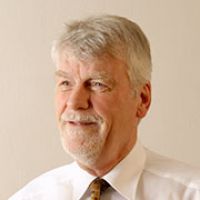
Dr Gerd Eisenbeiß
A lack of public acceptance is ultimately the reason for the foreseeable end of nuclear energy in Germany. Political decisions have contributed significantly to the low level of acceptance at national level. Today, energy technologies of the energy transition such as wind power and HVDC lines are increasingly facing a lack of acceptance. Do politicians at federal and state level still have the strength to counter this and, if necessary, push through a project even in the face of major doubts and reluctance?
According to my observations as designer and head of the "Citizens' Dialogue on Nuclear Energy" from 1975 to 1978, acceptance of nuclear energy was lost in an asymmetrical public debate. It was simply easier to raise doubts and warn of catastrophes, to mobilise against the "nuclear state" or the "plutonium economy" than to refute such claims with 1000-page risk analyses.
A serious argument could not simply say, "Nuclear energy is safe!", but had to acknowledge the actual risks in a differentiated way and argue with probabilities of occurrence. Anyone who knows from psychology (e.g. from Nobel Prize winner Daniel Kahneman) that we humans have no direct access to understanding probabilities will no longer be surprised at the failure of the "awareness campaigns". Political decisions have not played a significant role in this context. The clear pro-position, such as that of Helmut Schmidt, was thwarted in the SPD's own ranks because it was sensed early on that the emerging Greens would change the power options if they were not caught. This in turn was linked to the proportional representation system, which gave the Greens more influence in Germany than in France or the UK. The nuclear weapons status of these two countries should also not be forgotten.
In conflicts such as the one over nuclear energy, it always depends on who has the duty to justify: theoretically a consequence of the polluter pays principle. In real societies, however, nothing that is generally agreed upon, be it wrong or right, needs to be justified. This general consensus existed almost everywhere with regard to nuclear energy until 40 years ago: for Willy Brandt, nuclear energy was part of the great reform programme, a hope. When a single SPD MP rejected the 4th nuclear programme in 1973, he was regarded as an eccentric.
In the battle for public opinion and green voters, subsequent federal governments have also portrayed harmless incidents such as minor contamination of Castor containers (for example, the then Environment Minister Angela Merkel) as serious dangers, thus seemingly confirming corresponding insinuations by nuclear opponents. This demonised nuclear transports, a part of the nuclear system with the lowest risk potential.
German development was characterised by my generation's historical sense of guilt 50 years ago. As Germans, we had resolved to no longer be guilty of anything. The new prosperity made it possible to subordinate economic advantages to ethical concerns - a change in values that has continued to this day.
Today, the pattern of "asymmetry" is repeated against wind turbines or power lines (doctors conjure up health risks, e.g. from infrasound, Horst Seehofer fights "monster power lines"). The fact that the solution is then always to increase costs is calmly accepted. The only thing that remains unchallenged is the most impractical source of electricity, photovoltaics, which is neither helpful in the evening and at night nor for energy-intensive winter consumption, but requires expensive external support from parallel power plants or storage facilities.
Against the backdrop of constant courting of approval and voter favour, politicians perhaps lack not just the strength but the will to assert themselves in the face of vociferous protests amplified by the media.
What is remarkable about the case of nuclear energy in Germany is that nuclear power plants and other nuclear technology facilities are often accepted and supported locally and regionally, but are rejected nationally, i.e. rather abstractly. Why was this hardly taken into account in the debate on nuclear energy by politicians concerned about the opinion of the public?
Politicians in a democracy are all about power and majority. The quiet villages around a nuclear facility count for little.
What was interesting 40 years ago was a noticeable difference between Protestant and Catholic regions. For the American Hermann Kahn, an internationally renowned world interpreter at the time, it was a general cultural phenomenon that Catholic regions questioned authority less than Protestant regions. The relatively weak anti-nuclear movement in France and Spain could also be interpreted in this way. In Germany, the confessional differentiation of the regions increasingly receded into the background, especially as the active protest groups travelled across the republic to fight nuclear projects regardless of their location.
In the case of energy transition technologies such as wind power and HVDC lines, as well as repositories for radioactive waste, the opposite is true, i.e. abstract approval at national level, but local/regional rejection if the worst comes to the worst. Can anything at all be learnt from the situation of nuclear energy in Germany with regard to acceptance?
There is another phenomenon here, which can be studied in the case of Stuttgart 21, for example: despite many years of information about the purpose and extent of the station conversion, the resistance only began when the construction vehicles arrived. This will always be the case with major projects. A sufficient number of people no longer want any changes in their neighbourhood; they are fine, the disadvantages appear to be much greater than any advantages for the general public.
In the case of the nuclear power plants, the fact that the people working in the NPP lived in the neighbourhood of the power plant, identified with it and the respective communities received a lot of money for the best equipment for public services played a special role. This created a local consensus in which opponents had a hard time. It should come as no surprise that local opinions are now taken more seriously by route opponents than local supporters were back then: in politics, those who argue with their fear of danger are right. The politician wants to show how seriously he takes the concerns, how sensitive he is. It can also be the case (e.g. monster roads) that a politician just wants to show his fellow countrymen what he can get away with.
In my opinion, nothing can be learnt from the nuclear controversy. It will always be the case that early "awareness campaigns" fail to attract attention because attention is the scarcest resource in the world, and all the advertising strategists in business, politics and the many NGOs are fighting for it. The strategy of creating or reinforcing fear will have a better chance of success than factual explanations.
In the narrower field of nuclear projects, you will be able to study this in every dismantling project and especially in nuclear waste disposal. Because everything I explained at the beginning applies here again.
Roland Tichy in an interview with kernenergie.de on the social climate for technology and innovation in Germany
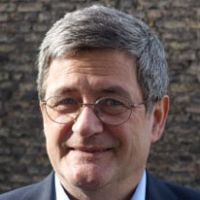
Roland Tichy
May 2015
Roland Tichy is a graduate of the German School of Journalism and studied economics, politics and communication sciences. He headed the Berlin office of Handelsblatt and was editor-in-chief of WirtschaftsWoche from July 2007 to July 2014. Roland Tichy is currently active in politics and journalism as Chairman of the Ludwig Erhard Foundation. Tichy is publisher of the internet opinion magazine "Tichys Einblick" on www.rolandtichy.de.
In Germany, many people have a very ambivalent relationship with technology and innovation: While innovations in consumer products and on the Internet are often enthusiastically, sometimes even naively, accepted, a large and still growing number of citizens are openly hostile to more and more technologies that are further removed from the reality of their lives, such as raw material extraction (especially so-called fracking), energy supply (nuclear energy, coal) or agrotechnology (especially genetic engineering)? Where do you think this conflict comes from?
This type of dissonance arises when the benefits and harms or costs fall far apart. This can be seen in the recent debate about the astonishing wage demands of childcare workers in daycare centres: many parents understand this and marched on the town halls to support the wage increases. In doing so, they are buying themselves a quick end to the strike and perhaps better-humoured nursery nurses for their children - the costs are borne by the taxpayer. The parents' behaviour is therefore rational - they reap the benefits, others bear the costs. Disguising costs is one of the usual procedures and a high political art in order to gain political advantages without having to take responsibility. Public debt is one of them - what do I care about the interest today that will make future generations groan? Are these my voters today? Who is voting for me - the beneficiaries of early retirement, mothers' pensions, minimum wage - or the future contributors? This discrepancy can only be bridged by a responsible attitude in the media and politics that looks beyond individual lobby interests. The situation is very similar for technology: mobile phones were controversial for a long time; the debate about the harmfulness of mobile phone radiation was loud and audible. Now the advantages of a great smartphone seem to outweigh the disadvantages for hypersensitive people; end of debate. Why should I put up with the dangers of fracking in my neighbourhood when my electricity comes from the socket and the costs of power generation are incurred far away, for example with wind turbines in the North Sea? Will my nutritional situation improve as a result of GM food? If the benefits cannot be experienced individually, the associated risks will not be borne.
How entrenched do you think the opinions that reject numerous technologies and economic sectors are? Are they internalised or canonised, i.e. already anchored in school lessons, or is there also a media effect here, in which the production of public outrage is countered by a silent majority with a more pragmatic orientation.
The rejection has been learnt, as can be seen when even school laboratories have to be shut down in Lower Saxony. The rejection has long been ideologised and legally anchored and canonised in the state of an overall social view. Early campaigners against nuclear energy enjoy hero status like soldiers of the Red Army who liberated Germany; profiteers of the solar and wind turbine industry are not seen as profiteers and subsidy hunters, but as innovators, pioneers and do-gooders. This is conveyed by the same view of politics and the media; I have written elsewhere about the mechanisms of the media, e.g. here. Media have a reinforcing effect and select the views and arguments that are disseminated; via the archive function, old views are to a certain extent independently perpetuated.
How do you see future developments: is there a chance of reconciling people with "unpopular" technologies or achieving pragmatic understanding, or will business and politics have to come to terms with the fact that scepticism and distrust of many people towards technology and industry is constantly growing?
The individualisation of behaviour will make this difficult. Let's take seemingly non-political issues: As a citizen of Stuttgart, how am I supposed to put up with a dozen noisy and dirty years for the construction of an expensive railway station if the "returns" in the form of better city centre development don't reach me at all due to my age? Nimby, not in my BackYard, is the political formula for success. This quickly becomes a macroeconomic requirement; why should I put up with a power line or a wind farm? Me? New solutions are often forced through in this way, such as (expensive, not financed by me) underground cables or less complex power lines. However, these actions remain regionally limited as long as there is no kind of overall social or religious superstructure: opponents of nuclear power were not so much the local residents, who could also see the benefits in terms of jobs and business tax, but a demonstration movement acting out of a sense of overall responsibility, which eventually became an independent party, which in turn derived the mandate to fight other forms of progress from this: the IT industry, mobile phones, genetic engineering, traffic routes. It is difficult to fight against this as long as politicians refrain from leadership and persuasion and the media adopt rather one-sided anti-technology positions.
Dr Rosmarie Hengstler-Eger in an interview with kernenergie.de on innovative methods of materials research on fuel element cladding tubes
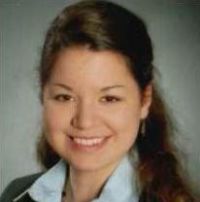
Dr Rosmarie Hengstler-Eger
January 2015
Dr Rosemarie Hengstler-Eger studied physics at the Technical University of Munich (diploma in 2008) and obtained her doctorate in physics there (industrial doctorate with AREVA GmbH, 2012). She was an engineer for materials development and irradiation programmes at AREVA GmbH in Erlangen from 2011 to 2014 and has been an engineer for materials development at AREVA NP SAS in Lyon since January 2015.
Your research is concerned with the effects that neutrons from the chain reaction in pressurised water reactors have on fuel rod cladding tubes and fuel element structural parts. What effects occur as a result of neutron irradiation and what are the general requirements for the material of the cladding tubes and structural parts?
The neutrons "collide" with the atoms of the material and push them from their position in the lattice structure in which the atoms are arranged in the material. The displaced atom continues to move through the material and in turn collides with atoms, creating a dislocation cascade. The atoms leave empty spaces in the lattice and come to rest on an intermediate lattice site. One neutron can create several thousand vacancies and interstitial atoms. These defects diffuse through the material and can interact with grain boundaries, second phases or with each other. In particular, they form clusters that take the form of dislocation rings in the atomic lattice of the cladding tube material. These cause the material to shrink in one lattice direction and expand in the other directions; as a result, the components and thus the fuel assemblies (FA) expand axially, i.e. lengthwise. This must be taken into account in the design and may only occur to a limited extent. Apart from this, the structural materials must have other essential properties, e.g. a high melting point, high corrosion resistance, low hydrogen absorption and a low capture cross-section for thermal neutrons so that not too many neutrons, which are required to maintain the chain reaction, are absorbed.
What is the special approach of your research, what are the practical benefits that can result from it?
The challenge for material development is that experiments in the power plant take years and the activation of the samples results in high costs for transport and follow-up analyses. In addition, the experimental parameters in the reactor are relatively inflexible and the samples can only be taken during inspections. The approach of my work is to generate the radiation damage not in the reactor with neutrons, but outside the core by ion irradiation. This skips the first collision between neutron and atom and starts directly with the first displaced atom. As ions interact much more strongly with the material than neutrons, the effects typical for the end of a fuel element's life are produced in the form of dislocation densities within a few hours. The samples are not activated and the experimental parameters are freely selectable. What is special, however, is that the samples can be irradiated while they are in a transmission electron microscope. This makes it possible to observe the development of the radiation damage live and investigate how the defects develop with the dose. It is impossible to obtain such information through experiments in the reactor. This allows us to analyse the influence of material and environmental parameters on radiation damage. The results are used for material optimisation.
Where do you see further potential for innovation in light water reactor technology and how are research and development in Germany positioned in a global comparison?
In the field of LWR design, for example, the Small Modular Reactors should be mentioned here. In fuel element development, not only are the tried and tested structural materials and fuels being optimised, but completely new material systems are also being investigated. Of course, there is also potential for innovation in code development, i.e. in numerical simulations on computers. Unfortunately, university research in the field of nuclear technology is being significantly reduced in Germany. This is in no way comparable to countries such as the USA and France. It is significant that the facility where I am carrying out the experiments does not belong to a German institute, but to the Argonne National Lab in the United States.
Finally, a more general question: in your view, what role does excellence in nuclear technology still play today for technical and industrial expertise in general? In the past, R&D in nuclear technology has also provided important impetus for other areas and has set industrial quality standards.
The high safety standards in nuclear technology require continuous monitoring of components as well as the integration of state-of-the-art science and technology into existing systems. Accordingly, developments in material testing, measurement technology and robotics are being driven forward and methods for component renewal are being found. These can also be used in other areas, e.g. for wind turbines or conventional power plants. Another area that benefits from developments in nuclear technology is medicine. The need for radioactive isotopes for diagnostics and therapy and the associated issues of radiation protection, handling, transport and (final) storage are topics to which the expertise of nuclear technology makes a significant contribution.
Jan Pauly in an interview with kernenergie.de on the SSK's recommendation on planning measures for emergency protection in the vicinity of nuclear power plants
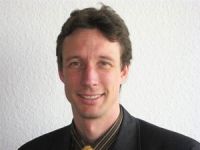
Jan Pauly
January 2015
The Radiation Protection Commission (SSK) was requested by the Federal Ministry for the Environment, Nature Conservation, Building and Nuclear Safety to review the technical regulations on nuclear emergency protection (disaster control) in light of the accident in Fukushima. As one of the follow-up measures, the SSK recommendation on planning measures for emergency protection in the vicinity of nuclear power plants was discussed and subsequently published. To this end, kernenergie.de conducted an expert discussion with Jan Pauly, Policy Department, Global Unit Generation of E.ON Kernkraft GmbH:
In February 2014, the Commission on Radiological Protection (SSK) presented recommendations on planning areas for emergency protection in the vicinity of nuclear power plants, which are to be understood as a post-Fukushima measure. What are the key points of these recommendations?
The recommendation contains a significant expansion of the currently existing planning radii (areas in which disaster control measures are to be planned in advance), which roughly means a doubling to quadrupling of the radii and thus a quadrupling to sixteen-fold increase in the areas affected. The main changes are shown in the following table. The planning radii have no direct impact on the people living in these areas in normal life, as was already the case for the old planning radii. In the affected areas, certain measures are to be planned in advance by the local disaster control authorities so that they can be implemented within specified periods of time to protect the population. Up to now, this has usually involved several local disaster control authorities (usually the districts) and in some cases several federal states; in future, this will affect considerably more authorities due to the increase in size. The guideline values for individual measures, which have remained virtually unchanged since 1999 (e.g. the value above which an evacuation would be justified is a dose of 100mSv in 7 days), were also reviewed by the SSK, but no need for adjustment was seen here.
Prof Dr Thomas Klinger in an interview with kernenergie.de on nuclear fusion research
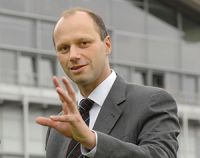
Prof Dr Thomas Klinger
January 2014
Prof Dr Thomas Klinger is a member of the Board of Directors of the Max Planck Institute for Plasma Physics, Scientific Director of the Wendelstein 7-X project at the Greifswald branch and Head of Stellarator Dynamics and Transport. He has held the Chair of Experimental Plasma Physics at the Ernst Moritz Arndt University in Greifswald since 2002.
kernenergie.de asked Prof Dr Thomas Klinger about nuclear fusion research in Germany and worldwide and its importance for high-tech industries
With the Wendelstein 7-X experiment in Greifswald, a second large-scale fusion research facility is currently being built alongside the ITER project in France, in which the Max Planck Institute for Plasma Physics (IPP) is also involved. What are the reasons for pursuing two such large projects and what are the differences in the concepts?
The aim of the two large-scale projects ITER and Wendelstein 7-X is to obtain meaningful data on the suitability of the two confinement concepts for a fusion plasma "Tokamak" and "Stellarator" for power plants.
To achieve this, the experimental facilities must have a certain minimum size. The size of ITER has been chosen so that integrated nuclear operation with ten times more energy production than energy consumption is possible. This is an extremely important step for fusion research. Wendelstein 7-X, on the other hand, is not designed as a nuclear facility and will therefore not generate any surplus energy. The task of Wendelstein 7-X consists of two major goals: Firstly, to demonstrate the greatly improved plasma confinement expected with systematic optimisation of the magnetic field. Secondly, the facility is to maintain a hydrogen plasma relevant for fusion for thirty minutes for the first time. Achieving the first goal would confirm the stellarator as a power plant concept; the second goal is also of great scientific and technological importance for ITER, as it is also intended to maintain the plasma for long periods of time.
The difference between the two concepts "tokamak" and "stellarator" lies in the generation and shape of the magnetic field: In the tokamak, the ring-shaped magnetic field is generated by coils in which a strong current flows. The twisting of the magnetic field lines, which is essential for plasma confinement, takes place via a current in the plasma, which is generated by the induction effect. In the stellarator, the ring-shaped magnetic field is generated at the same time as the twisting by current-carrying coils. An additional current within the plasma is not required here. This has important consequences: In the tokamak, the magnetic field has symmetries that optimise particle confinement, among other things. These symmetries are not present in the stellarator, which means that the three-dimensional magnetic fields have to be optimised. This requires complex calculations to solve the basic equations. These have only become feasible since the availability of supercomputers, which means that the stellarator concept has not yet progressed as far in its development as the tokamak. However, the stellarator has decisive advantages: In principle, it is capable of continuous operation, which is much more difficult with the tokamak, as the generation of a strong current in the plasma required there cannot yet take place continuously today. There are also many indications that the stellarator is easier to control and fundamentally more stable in operation. Both concepts - tokamak and stellarator - are therefore being investigated in a globally coordinated research programme.
If you place ITER and Wendelstein 7-X with their different concepts in the history of controlled nuclear fusion research, which of the two technologies do you think is closer to a practical application for energy generation?
The ITER research facility is being built with the aim of generating considerably more energy than it absorbs for the first time. Wendelstein 7-X has too small a plasma volume for significant energy generation, but the facility is not designed for this either: the stellarator must first demonstrate the power plant potential, which the tokamak has already achieved with the European research facility JET in Culham (UK). In this sense, the tokamak is closer to a practical application for energy generation. However, it should be noted that these are still research facilities and a considerable amount of research is required to obtain a clear picture of a fusion power plant. The stellarator has clear advantages (see above), but has yet to demonstrate its potential. It is also quite conceivable that both concepts will be ready for application and - as with petrol and diesel engines - marketed in parallel.
Key scientific and technological issues for the tokamak and stellarator include
- Stability of the plasma state,
- Plasma turbulence, which leads to deterioration of the inclusion,
- Interaction between the plasma and the wall structures
- Efficient heating methods for the plasma
- permanent plasma generation,
- Generation of tritium as fuel in the so-called blanket wall structures.
The progress made in recent decades has been remarkable. In recent decades, persistent research has made it possible to improve the most important quality factor by three orders of magnitude - i.e. by a factor of 1,000. This quality factor describes the combination of the required plasma density and temperature as well as the thermal insulation provided by the enclosing magnetic field. Plasma temperatures of over 100 million degrees Kelvin are now routinely achieved in the world's modern experimental facilities, which is the basic prerequisite for efficient energy generation through fusion.
A brochure published to mark the 50th anniversary of the Max Planck Institute for Plasma Physics in 2010 contains an overview of the history of the development of fusion research with tokamaks and stellarators.
Both fusion projects are breaking new scientific and technological ground. How do you assess the significance of this development beyond controlled nuclear fusion, how important will it be for companies and industrial locations in general to play a leading role in this area?
Fusion research requires high technologies such as superconductivity, refrigeration technology, vacuum technologies, high-power microwaves, nuclear technology and much more. The industrial contracts awarded in connection with the construction of ITER and Wendelstein 7-X often push the boundaries of what is technologically feasible. This drives the industrial partners to peak performance, which ultimately makes them more competitive on the market. This training effect is more significant than all the spin-offs that can be derived from fusion research. In the long term, it is of course attractive for industry to master the key technologies required for the construction of fusion power plants. In the international ITER project, this realisation has led the seven ITER partners to insist that each partner learns to master all the key technologies, which naturally leads to an extremely complex project structure.
Christian Meyer zu Schwabedissen in an interview with kernenergie.de on the international development of nuclear energy
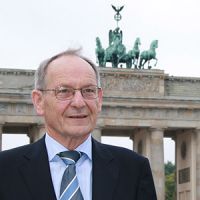
Christian Meyer zu Schwabedissen
January 2014
Christian Meyer zu Schwabedissen has worked in various areas of nuclear technology for 38 years. He started as a research assistant at Siemens KWU and was later involved in the commissioning of all German nuclear power plants. After the end of the expansion phase, he acted as a consultant to the power plant operators. Since 1998, he has been responsible for contacts with politicians and associations, initially at Siemens KWU and later at AREVA GmbH. As Director of Political Contacts, he has headed the Berlin office since 2003.
After the reactor accident in Fukushima, there was a very rapid change of policy in Germany and talk of a turning point in relation to the use of nuclear energy. How has the view of nuclear energy developed outside Germany?
After Fukushima, every country operating nuclear power plants critically reviewed its own facilities. The best known in this country is the European Union's so-called stress test, which incidentally confirmed the high safety level of all German nuclear power plants. But there have also been comparable analyses in other countries. China, for example, has concluded that it will only use Generation III reactors for new construction projects. Many countries have further strengthened protective measures against severe natural events in particular. At the same time, new construction programmes are continuing, for example in EU countries such as the UK and Finland, but also in America and Asia. The UK has found an interesting way of combining the advantages of nuclear energy with those of renewable energies. In my view, it is now very clear that the German phase-out remains an isolated case.
In your experience, what aspects play a key role when political decisions are made in countries to continue or expand nuclear energy, or to enter the technology for the first time?
The more efficient use of resources as well as environmental and climate protection determine the energy policy of all countries. Outside Germany, affordability and security of supply are also top priorities. Against this backdrop, it makes sense to focus on nuclear energy. After all, nuclear energy can not only produce electricity 24 hours a day, but is also low in CO2 and conserves fossil resources.
Climate policy goals and the expansion of renewable energies are also on the energy policy agenda in many other countries. Where do you see the role of nuclear energy in the global energy supply around the middle of the century?
All international studies predict an increase in nuclear energy. The International Energy Agency, for example, expects installed capacity to increase from just under 400 gigawatts today to 600 gigawatts in 2035. As nuclear power plants will also be decommissioned during this period, there will be a need for new construction of around 300 gigawatts. This corresponds to more than 200 new nuclear power plants. This expansion will of course mainly take place in Asia, as this is where electricity consumption is growing the most. However, there will also be an increasing number of new construction projects in Europe. Looking at the European Union, the number of nuclear energy countries will remain constant if Poland enters the nuclear energy market at around the same time as Germany exits, i.e. 2022, as currently planned.
Bernd J. Breloer in an interview with kernenergie.de
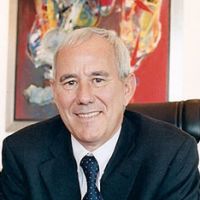
Bernd J. Breloer
December 2013
Dipl.-Kfm. Bernd J. Breloer was a member of the management board of Uranit GmbH, chairman of the management board of Nukem GmbH, member of the board of Urenco Limited and member of the management board of RWE Rheinbraun AG.
kernenergie.de interviewed Bernd Breloer about the search for a final storage site under the Site Selection Act, the Gorleben site and the "Storage of highly radioactive waste" commission.
The Site Selection Act is intended to make a fresh start in the search for a final repository for heat-generating radioactive waste and to strive for a social consensus. How would you assess the prospects of a lasting consensus?
Before we talk about a lasting consensus, let us first note that the consensus so far has only been negative: no exploration of the Gorleben salt dome, no transport of vitrified waste from reprocessing in France and England to the Gorleben interim storage facility, completion of the safety analysis of the Gorleben site carried out by the Gesellschaft für Anlagen- und Reaktorsicherheit (GRS) "without a suitability prognosis" and, last but not least, no salt laboratory in the exploration mine for outstanding research into salt as a host rock. In reality, the consensus is to do nothing about final disposal for the time being - and for as long as possible. Gorleben should certainly not be explored to the end. The supposed consensus will fall apart at the latest when the search for alternative sites becomes concrete. Can anyone imagine that the regional politicians concerned or even the anti-nuclear groups will stand idly by when it comes to a specific new site? Can anyone imagine that politicians would then fail to recognise diverging interests and exploit them politically? Especially as it has already been shown that and how the realisation of a repository can be prevented for political reasons, even if billions have already been spent on it.
The exploration of Gorleben has been stopped, but the site is being kept open and remains in the selection process, where it is to be compared with the additional future exploration sites. Is there a compelling reason for a new site search without finalising the exploration of Gorleben?
From a technical point of view, there is absolutely no reason, and certainly no compelling reason, for a new site search. Especially not before the exploration of Gorleben has been completed. As is well known, the previous exploration has fulfilled all expectations regarding the suitability of the site. In June 2000, the red-green federal government even gave the electricity industry the black and white that the geological findings to date do not preclude the suitability of the Gorleben salt dome. In the preliminary safety analysis for Gorleben, anyone can read on the GRS website that the salt dome will safely contain the waste for a million years, that the barrier system fulfils the safety principles of the Federal Ministry for the Environment and that the repository system is robust even in the face of unfavourable assumptions. It is remarkable that this study is not to be found on the website of the client, namely the BMU, or the Federal Office for Radiation Protection, which is responsible for repositories.
There are only political reasons for a new, expensive and probably futile search for a site, and these have been achieved: The issue has disappeared from the political stage for the time being.
The "Storage of highly radioactive waste" commission provided for in the Site Selection Act is to discuss the issue of the disposal of this waste in a completely new, open and science-based manner. How do these demands relate to each other in view of several decades of nuclear waste management research in a large number of countries?
Like the entire law, this commission is of course only of political and tactical importance. This already applies to the wording, which implies that everything to date is of inferior, poor quality. The reality is different. Germany has a wealth of experience from its own geological research and participation in foreign projects. Germany does not have to start from scratch. The key question of whether rock salt is even suitable for a repository has long been answered in the affirmative. During the time of the red-green government, the then Federal Environment Minister Trittin tried to disqualify rock salt as a host rock for a repository by conducting comparative studies with granite and clay. But this was not successful. Germany is also at the cutting edge when it comes to the other key issue of what safety requirements should be placed on a repository: just three years ago, the Federal Environment Ministry updated the safety requirements.
Let me summarise: It is highly likely that we have a suitable final storage site in Gorleben. It is therefore completely unnecessary to start a new search for a site. This would become clear to everyone if the few outstanding investigations at Gorleben were to be completed. This is precisely why this is not happening. The fact that it [the Gorleben salt dome] at least remains in the selection process is fortunate. I personally and also my co-author Wolfgang Breyer, who worked on your questions together with me, believe that the final repository in Gorleben will be realised at the end of the day. It will be a long and very expensive road until then.
Prof Dr Horst Zillessen
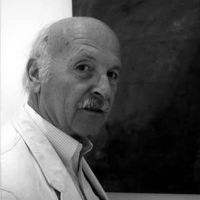
Prof Dr Horst Zillessen
December 2013
Firmen founder, managing director, partner of MEDIATOR GmbH - Mediation and Conflict Counselling. One of the first and most experienced environmental mediators in the German-speaking world.
Many federal politicians believe that with their decisions to phase out nuclear energy by the end of 2022, a so-called "major social conflict" has finally been settled once and for all. Do you share this view?
So far, civil society organisations have had little or no involvement in the resolution of this conflict, which is why I do not share this view in view of my mediation experience in environmental policy conflicts. In view of the social significance of this conflict, it seems highly questionable to me whether it can be resolved by federal policy decisions alone. What is needed here is a consensus-oriented procedure, e.g. within the framework of a forum, in which the pros and cons are carefully weighed up in a way that is comprehensible to the public, with the participation not only of political and economic organisations, but also of the relevant social organisations, and in which an attempt is made to work through the fundamental issues of this conflict carefully and impartially under the guidance of experienced mediators. At the end of such a process, the pros and cons can be weighed up in a way that is comprehensible to the public and a decision can be proposed to the responsible political bodies.
The discussion process should be documented in a way that is comprehensible to the public, but not in the form of permanent television coverage, which is associated with the risk of "window-dressing" by those involved. This topic requires careful and serious listening to each other and taking the different points of view seriously, as well as weighing up the advantages and disadvantages of the phase-out without prejudice in terms of security of supply, climate protection and the ability to provide for the future for generations to come. In all likelihood, there will be learning processes for many of those involved. Permanent publicity is counterproductive for such an approach.
The discussion should therefore not be conducted in public, as it must remain open to the knowledge processes and new insights of all participants, who must not then be publicly accused of having changed their minds because they have learnt something new in the discussion process - from which no one is immune in this context either. The regular involvement and information of the public must of course be guaranteed - i.e. the public must be informed via the minutes of meetings and, if necessary, through press conferences and public events, the timing and organisation of which are decided by the forum. In this way, the public can understand how the discussion process is progressing and which arguments have ultimately led to a consensual (in the best case) or a majority decision on the exit.
The debate about nuclear energy in Germany has been characterised by strong, sometimes violent emotions for many years. (How) Can this debate be calmed down in the long term? Especially as new social conflicts are already emerging, e.g. at potential sites for the final storage of highly radioactive waste.
The debate about nuclear energy has been so emotional primarily because politicians have never seriously attempted to make it the subject of an open dialogue process, even though it was obvious from the outset that the use of nuclear energy would trigger fierce social controversy. In this area, politicians have primarily acted according to the method that has been labelled the "Decide-Announce-Defend-Approach" in the USA, with the abbreviation "DAD-Aproach" suggesting an association with dead.
In view of the facts created in this way, the debate about nuclear energy can probably only be calmed by taking a different path when implementing the politically agreed nuclear phase-out. Of course, I do not consider the prospects for this to be very favourable. Back at the end of the 1990s, I presented a concept entitled "Searching for a site for a national nuclear waste repository with the help of mediators experienced in resolving public conflicts" at a meeting in Berlin between employees of the relevant department of the BMU and the board of the Förderverein Umweltmediation e.V., Bonn. Although it met with interest from representatives of the Ministry, there were doubts as to whether the top management would accept such a participation concept. In view of the form of decision-making and discussion processes to date, it is difficult to say whether the debate on nuclear energy can be calmed down in the long term - if at all, then only with greater openness on the part of politicians in dealing with the social groups and organisations involved in this subject area.
Most experts assume that it will be decades before a repository for highly radioactive waste is opened. What recommendations do you have for on-site communication at the NPP sites with interim storage facilities for radioactive waste?
For communication at the NPP sites, it would certainly be helpful to first admit that the communication process has not gone very well so far (without addressing the question of guilt), but that a new form of communication should be sought for the future. In doing so, the concerns and fears, but also the experiences and insights on site, should be increasingly incorporated into the planning of further steps - if necessary under the guidance of all parties.
Prof. Dr Dr h.c. Ortwin Renn

Prof. Dr Dr h.c. Ortwin Renn
December 2013
Prof. Dr Dr h.c. Ortwin Renn is Professor of Environmental and Technical Sociology at the University of Stuttgart and Director of the Centre for Interdisciplinary Risk and Innovation Research at the University of Stuttgart (ZIRIUS). He was a member of the "Future of Energy Supply" ethics commission appointed by German Chancellor Angela Merkel.
Looking back on two years of work and the results of the "Secure Energy Supply" Ethics Commission, how do you rate it today?
After the reactor accident in Fukushima, there was hardly any support among the German population for extending the operating life of existing nuclear power plants. There was also a lack of acceptance among most social groups. In this respect, the Ethics Commission's recommendation to phase out nuclear energy by 2022 was an appropriate response to the public mood at the time (which is still valid). At the same time, the Ethics Commission showed that abandoning nuclear energy combined with an active climate policy would require an ambitious joint endeavour by all parties involved. The implementation of projects and policy programmes resulting from this joint effort should be bundled by a coordinating political body on the one hand and effectively communicated through a public platform on the other. To date, these two recommendations have only been implemented half-heartedly. As a result, many new problems and management deficits have arisen that urgently need to be addressed. The keywords here are reform of the EEG, introduction of capacity markets, improvement of energy efficiency in existing buildings and more. In principle, however, the goals of the energy transition can be realised if energy policy in Germany is not determined by political competition and individual self-interest.
What specific measures do you recommend in order to involve people in the issues of transport, interim storage and final disposal of highly radioactive waste?
The three key words here are: Transparency, dialogue and participation. Firstly, it is important that all facts and assessments are publicly accessible so that fears about secret documents or unpublished research results can be dispelled. Secondly, it is necessary to collect the urgent concerns and fears in dialogue with the relevant social groups and the population and to check the feasibility of the associated proposals for action. This should be done by an independent panel of experts. Ultimately, it is essential to explore several options in parallel when searching for a site and then to evaluate those sites that fulfil all previously defined safety standards for final disposal together with representatives of the affected population as part of a participatory process. It is important that all those involved have the impression that the selection process is fair, transparent and comprehensive.
In your opinion, what must be avoided at all costs in this context?
Firstly, we must avoid giving the public the impression that we can objectively determine the most suitable site for Germany. A safety comparison of several host rock formations is problematic for conceptual reasons alone, but the main reason is that each option will have advantages and disadvantages that are difficult to weigh up against each other. Instead, the aim must be to identify several sites that all fulfil the previously defined safety criteria. Secondly, the necessary safety criteria and protection goals must be drawn up in an open, transparent process characterised by expertise. Only when several sites that are undoubtedly suitable in terms of safety have been identified can a fair selection process that takes into account other economic and social decision-making criteria be realised through the participation of the respective site population.



